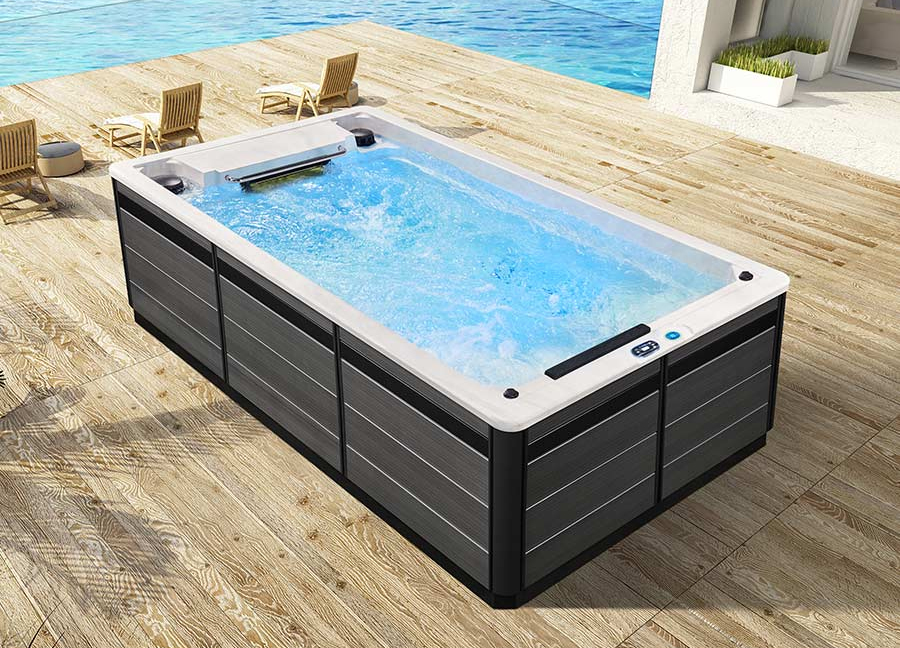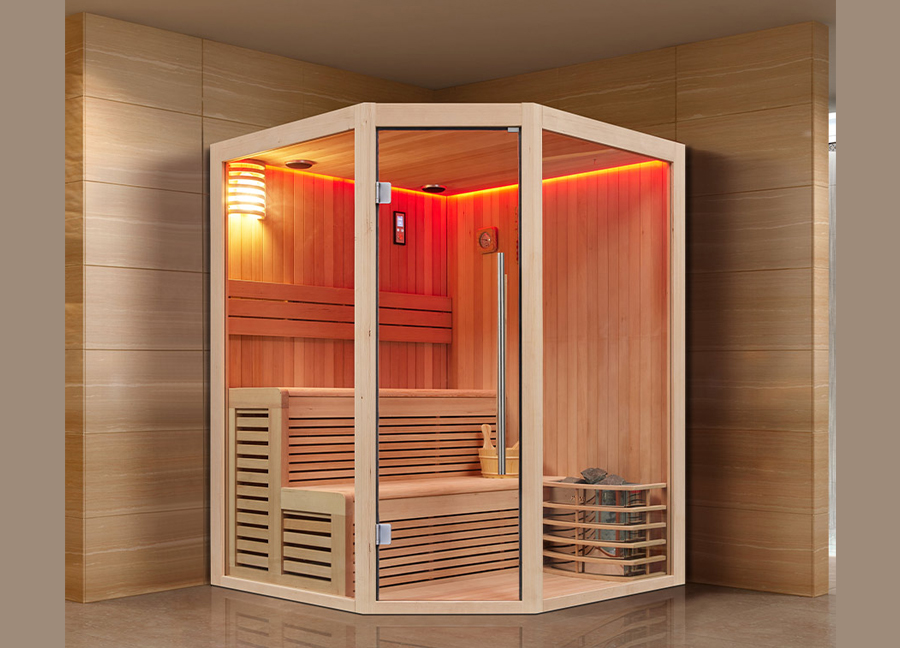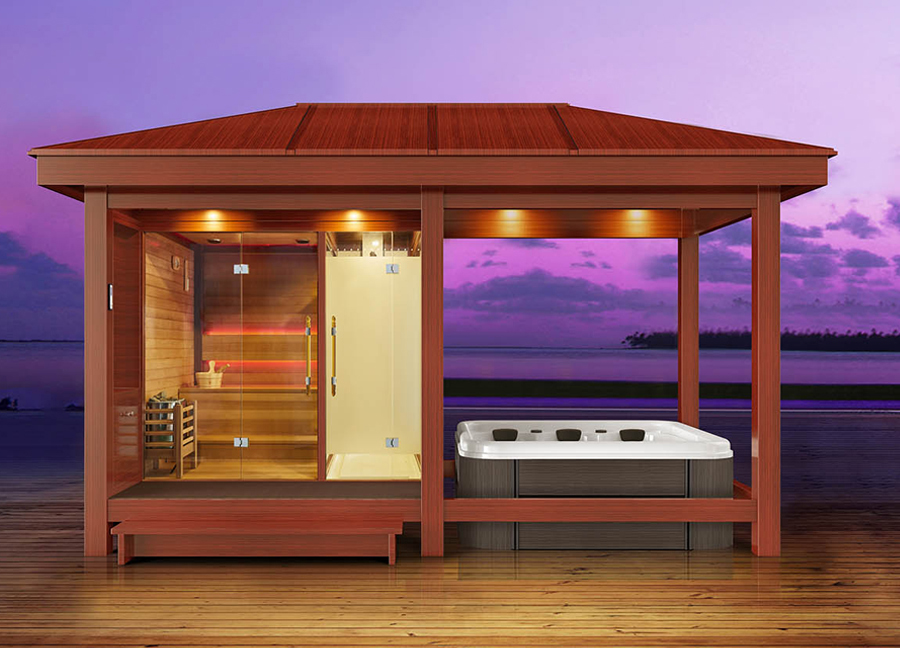A swim spa hot tub provides an ideal space for relaxation and exercise in the home. It combines the exercise function of a swimming pool with the spa effects of a jacuzzi, helping people de-stress, relieve fatigue, and improve health.
However, there is a risk of bacteria and other microorganisms in the water, especially in warmer environments. If not cleaned and maintained regularly, these bacteria can proliferate, leading to water pollution and even affecting the user's health. So, how can you effectively kill bacteria in a swim spa hot tub?
This article will explore in depth how to effectively keep the water quality of your swim spa hot tub clean, killing bacteria and harmful microorganisms to help you maintain optimal water quality.
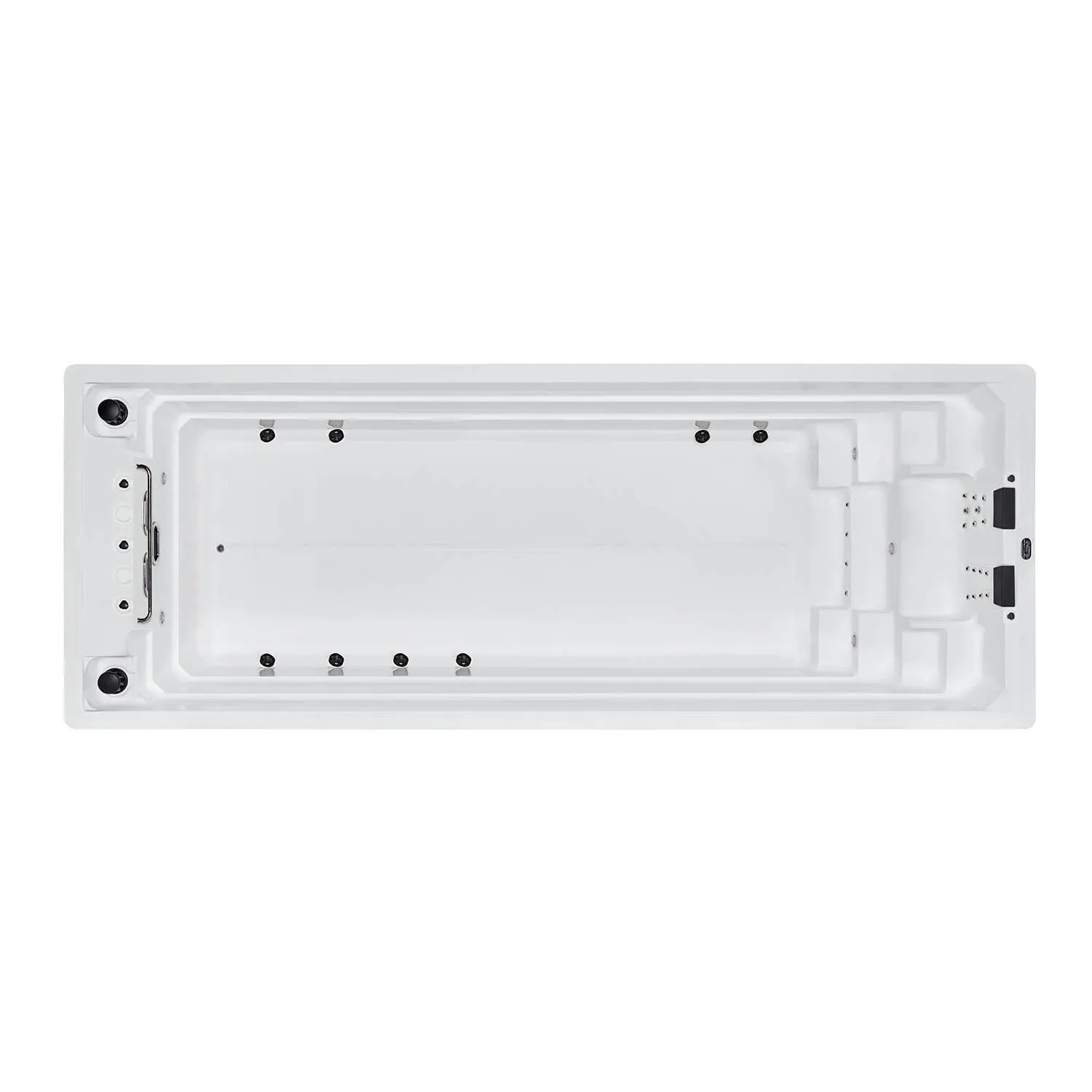
Why is special attention needed for bacteria in a swim spa hot tub?
Water is the core element of a swim spa hot tub. Prolonged contact with water, especially warm water, easily breeds bacteria, algae, fungi, and other microorganisms. The hot and humid environment greatly accelerates the reproduction rate of these microorganisms. Bacteria in a swim spa hot tub typically come from several sources:
• Human contamination: Every time you use the spa tub, bacteria, sweat, sebum, etc., from your skin enter the water.
• External Environment: If the spa tub is placed outdoors, natural factors such as rainwater and windblown sand can affect water quality.
• Water Source Contamination: If the water source itself is not clean, bacteria can enter the tub through the water.
If not treated promptly, these bacteria can pose a range of health risks, including skin diseases, respiratory infections, and allergic reactions.
What types of bacteria are commonly found in swim spa hot tubs?
The most common types of bacteria we encounter in swim spa hot tubs include:
1. Escherichia coli
E. coli is one of the most common bacteria found in water pollution. It usually originates from the human gut and can multiply in untreated water, causing digestive problems such as diarrhea and vomiting.
2. Staphylococcus
Staphylococcus is a common bacterium on the skin surface and easily multiplies in spa tub water. It can cause skin infections, pustules, boils, and other diseases.
3. Pseudomonas aeruginosa
Pseudomonas aeruginosa is a common waterborne bacterium, commonly found in humid environments, especially warm water. If not cleaned promptly, it can lead to problems such as skin allergies, eye infections, and ear infections.
4. Mold and Fungi
A warm, humid environment is particularly conducive to the growth of mold and fungi. While they are not necessarily pathogenic bacteria, they can cause unpleasant odors and skin infections.
5. Pathogenic Viruses and Parasites
Although less common than bacteria, viruses and parasites such as norovirus and Giardia can also be transmitted through unsterilized water, causing diarrhea, vomiting, and other gastrointestinal discomfort.
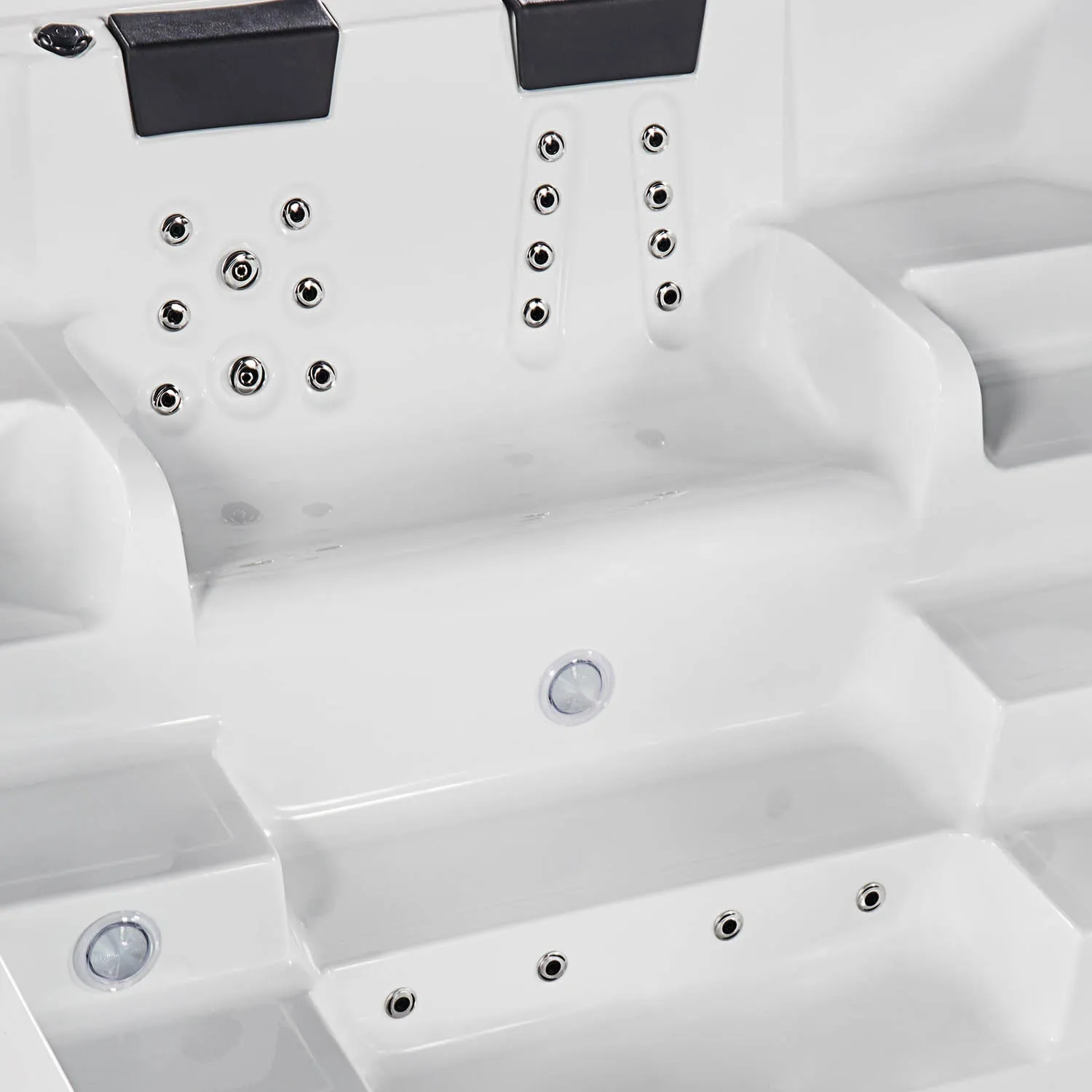
How to Effectively Kill Bacteria in a Swim Spa Hot Tub?
1. Use Appropriate Chemical Disinfectants
Chemical disinfectants are the primary means of killing bacteria and other microorganisms in a swim spa hot tub. Common chemical disinfection methods include chlorine, bromine, oxidants, and other disinfectants.
1). Chlorine Disinfection
Chlorine is one of the most commonly used disinfectants, possessing strong bactericidal properties and capable of quickly killing bacteria and viruses. Chlorine tablets or powder are usually added to the swim spa hot tub to maintain the chlorine concentration in the water within a suitable range.
Chlorine is widely used and highly effective, but it's important to note that excessively high concentrations can irritate the skin and eyes, so regular chlorine concentration checks are necessary.
Recommended chlorine concentration: 1–3 ppm (parts per million).
2). Bromine disinfection
Bromine is a milder disinfectant than chlorine and is suitable for high-temperature environments (such as swim spa hot tubs). It has a strong killing effect on bacteria and fungi and is relatively stable in water, making it suitable for warm water environments.
Recommended bromine concentration: 3–5 ppm.
3). Hydrogen peroxide disinfection
Hydrogen peroxide (H₂O₂), as an oxidizing disinfectant, destroys the structure of microorganisms by oxidizing cell walls. It is more environmentally friendly than chlorine and bromine and does not produce harmful byproducts, therefore, more and more people are choosing to use hydrogen peroxide to maintain water quality.
Recommended concentration: 10-20 ppm.
2. Ultraviolet (UV) disinfection
UV disinfection is a non-chemical sterilization method. By irradiating the water with UV lamps, the DNA of bacteria is destroyed, achieving a sterilization effect. Ultraviolet (UV) disinfection systems are typically used in conjunction with chemical disinfectants to ensure comprehensive water cleanliness.
3. Other disinfection methods
Newer disinfection technologies such as ozone and silver ion disinfection exist. While these methods are used in some high-end swim spa hot tubs, they are less common among individual users due to their high equipment cost and the need for professional maintenance.
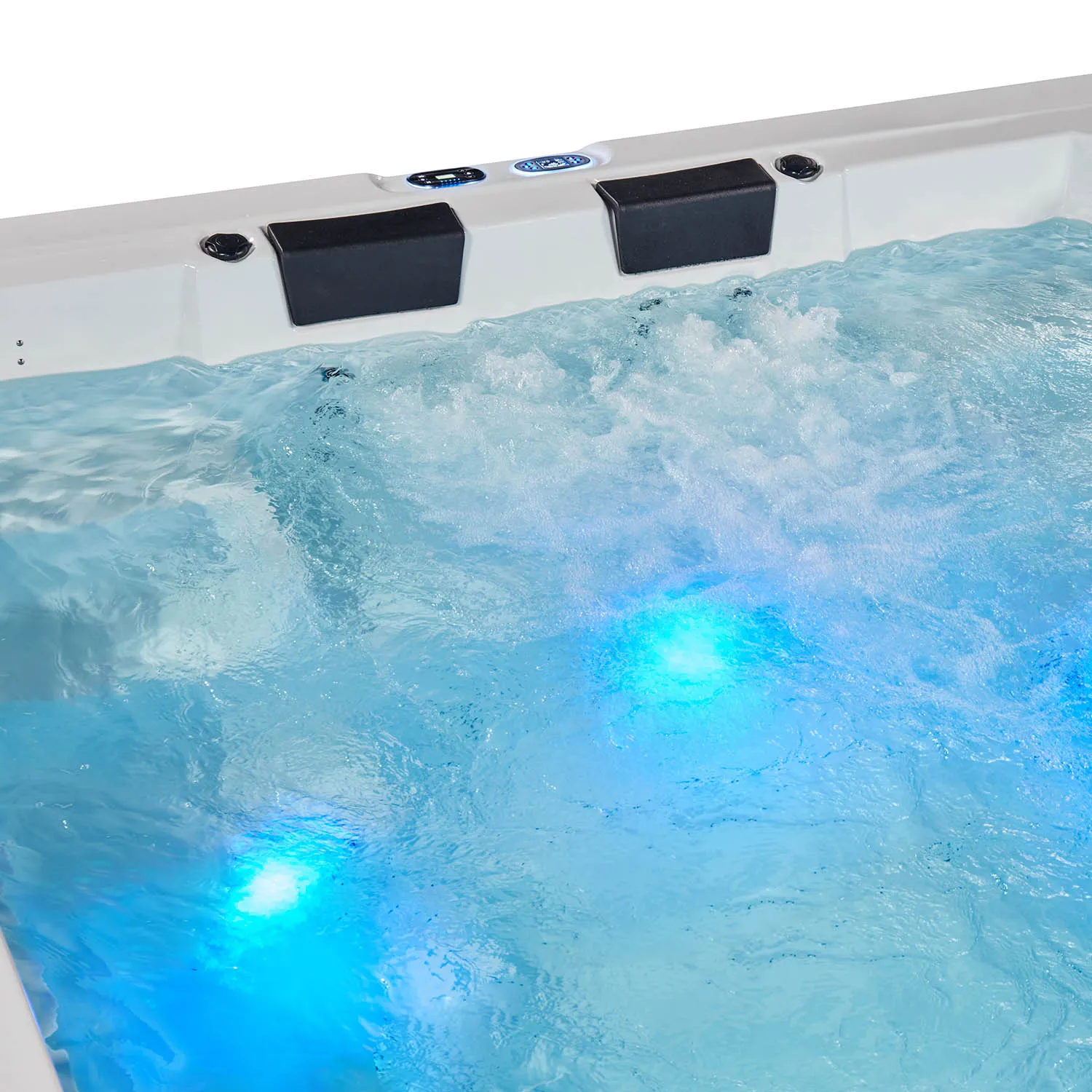
How to keep your swim spa hot tub water clean?
1. Regular water changes
Regularly changing the water in your swim spa hot tub is crucial for maintaining clean water. Even with disinfectants, organic matter, bacteria, and other microorganisms can still accumulate in the water, making regular water changes essential. Generally, changing the water every three months is ideal.
2. Cleaning the filtration system
The filtration system of your swim spa hot tub is a key component in maintaining water cleanliness. The filter removes most impurities, bacteria, and other contaminants from the water. Regularly cleaning the filtration system ensures efficient operation and effectively reduces bacterial growth.
Cleaning frequency: Clean the filter screen every 1–2 weeks; replace the filter every 6 months.
3. Use a Water Quality Testing Kit
Regularly use a water quality testing kit to check the pH, chlorine, bromine, and other indicators of your water. Water quality testing helps you understand the chemical composition of your water, ensuring it meets standards and preventing bacterial growth due to substandard water quality.
Recommended pH: 7.2–7.8.
4. Clean the Swim Spa Hot Tub Surface
The surface of a swim spa hot tub easily accumulates grease, dirt, and microorganisms from the water. Therefore, regularly cleaning the inside and outside surfaces of the tub, especially the showerhead and filter, can effectively prevent bacterial growth.
Clean the tub thoroughly once a month, ensuring every corner is clean.
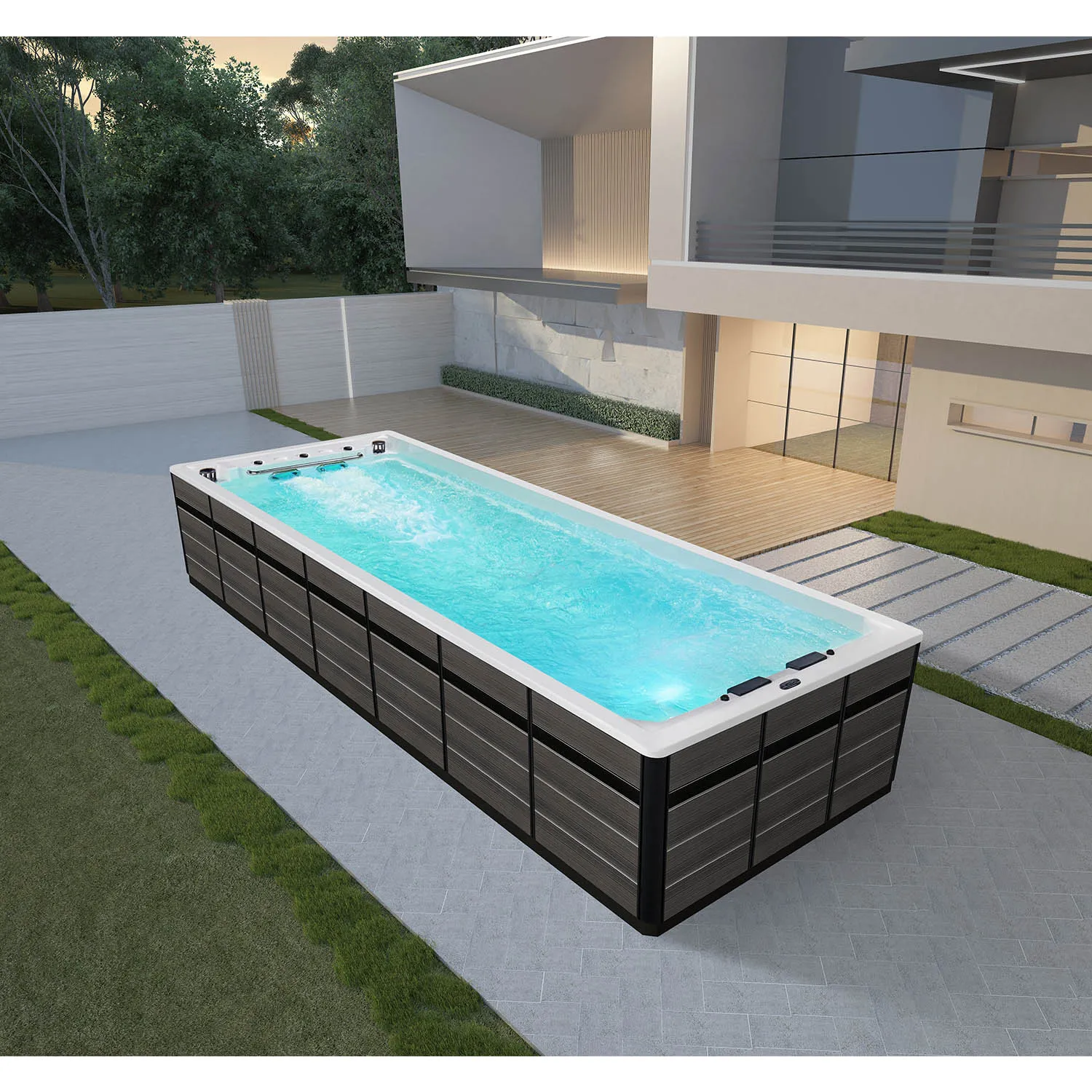
How does water temperature in a swim spa hot tub affect bacterial growth?
1. Temperature is an Accelerator for Bacterial Growth
Bacteria grow faster in warm environments, and the warm water in a swim spa hot tub provides ideal growth conditions for bacteria. The optimal growth temperature for most pathogenic bacteria is generally between 25°C and 37°C. To prevent bacterial growth, users should ensure the water temperature remains below 39°C. While temperatures above this level slow bacterial growth, they can still negatively impact water quality.
2. Appropriate water temperature can slow bacterial growth
A suitable water temperature (around 36°C) can slow bacterial growth to some extent, but to ensure long-term water cleanliness, chemical disinfection and physical filtration are still necessary.
How can the swim spa hot tub heating system be combined with bacterial control?
The heating and temperature control systems of the swim spa hot tub are crucial for bacterial control. Proper use of the heating system not only enhances the spa experience but also inhibits the growth of some bacteria.
1. Regularly adjust the water temperature
High-temperature water can effectively kill some bacteria, but the water temperature needs to be carefully controlled to avoid damaging the equipment or causing discomfort.
2. Avoid prolonged stagnation of water
If the swim spa hot tub is left unused for an extended period, the water can cool down, providing a suitable environment for bacterial growth. Therefore, when not in use, regularly checking and adjusting the water temperature to maintain a certain level of heat can effectively slow bacterial growth.
Common Misconceptions about Sterilizing Swim Spa Hot Tubs
1. Relying Solely on Chemical Disinfection
Many users are accustomed to using large amounts of chlorine or bromine to treat water, believing that disinfectants are the only way to solve water quality problems. However, chemical disinfectants can only address bacterial issues in water; they cannot completely remove organic matter, impurities, etc. Therefore, in addition to chemical disinfection, it is necessary to combine various methods such as regular water changes and cleaning the filtration system.
2. Neglecting Maintenance and Cleaning
Bacterial control in swim spa hot tubs relies not only on water quality management but also on regular cleaning and maintenance of the equipment. Regularly cleaning the inside of the tub, filter, and showerhead ensures that the equipment is free of any scale and debris, thus preventing bacterial growth.
What Kind of Warranty Do You Offer?
All our products, including outdoor spas, sauna rooms, and swim spas, come with warranties covering structure, electrical components, and surface materials. Warranty terms vary depending on the unit but typically cover 1–5 years.
This guarantee reinforces our high-quality commitment and helps our partners manage their sales confidently. Buying directly from our factory in China means full access to warranty support.

